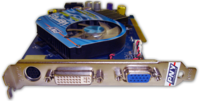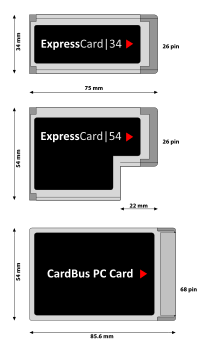What is a motherboard?
This is a lesson in the course Introduction to Computers, which is a part of The School of Computer Science
| Subject classification: this is an information technology resource. |
| Educational level: this is a secondary education resource. |
| Type classification: this is a lesson resource. |
| Completion status: this resource is ~75% complete. |
Introduction to the motherboard
[edit | edit source]The components inside a computer need to be able to talk to each other for the computer to operate. The motherboard is an electronic circuit board in a computer which interconnects the hardware that's attached to it. At a minimum, it connects a CPU and ke some of the load off of the CPU; busses process destinations for data, so the CPU can be left to do what it does best.
A motherboard normally has a set of expansion slots, which allow the motherboard to be expanded; it can be given extra functionality that it didn't have originally. Smaller boards called cards fit in these expansion slots, and these cards contain specialized circuits that let the motherboard do more. Typical motherboards also have a series of sockets for input and output, allowing communication through cables with various peripheral devices, both inside and outside the computer case.
Expansion slots
[edit | edit source]These are connectors on a motherboard where a circuit board can be inserted to add new capabilities. All personal computers contain expansion slots for adding more RAM, graphics capabilities, and support for special devices; some are more specialized than others.
Graphics card
[edit | edit source]
Graphics cards are also called video cards or sometimes video adapters. They are in most PCs. Graphic cards convert data signals into video signals so the images can be displayed on the monitor. While graphics processors are often built into a motherboard and a card isn't needed, graphics cards have stronger and more powerful processing capabilities that allow the display of 3d images, heavy image editing, or better rendering and frame rates in computer games.
Graphics cards are designed to offload the burden of making images from the CPU. Graphics cards also include on board memory for efficient rendering. Typical sizes include 4gb-6gb of memory. Today, high end graphics cards have multiple core processors that are largely parallel to increase texture fill and process more 3D objects in real time.
Sound card
[edit | edit source]
A sound card, also referred to as an audio card, allows the input and output of audio signals to and from a computer under the control of computer programs. Sound cards for computers were unusual to find until 1988. Until then, the single internal PC speaker was the only way early PC software could produce any sound. Uses of a sound card include the audio components for multimedia applications such as games, video/audio editing software, and music composition. Most computers today have sound capabilities built into the motherboard, however others require expansion cards to execute these functions.
Network Interface Cards (NICs)
[edit | edit source]
A network interface card can be a network card, network adapter, LAN Adapter or NIC (network interface card). They are a piece of computer hardware designed to allow computers to communicate over a computer network.
PC Card
[edit | edit source]A PC Card (originally PCMCIA Card) is a type of expansion card designed for laptop computers. They are about the size of a credit card, and give the laptop the same capabilities as a PC in a compressed size. There are three types of PC Cards, which are distinguished by their physical thickness. Type 1 cards are the thinnest, while Type 3 cards are the thickest. PC Cards add peripheral capabilities to laptops, such as additional memory, modems and network connectors, and other functions which were not built into the Laptop. As technology has improved, PC cards are being phased out, and are usually only found on older laptops.
ExpressCard
[edit | edit source]ExpressCards are replacing PC cards in modern computers because of their smaller size.
Ports
[edit | edit source]Ports are used by a motherboard to interface with electronics; that is to say, they are a way of getting input and output to and from hardware. Ports are commonly used to attach peripherals, specifically, hardware that exists outside the computer's case, although some ports connect to things inside the computer too. The amount of data that can be transferred over a port during a given amount of time is its bandwidth.
USB
[edit | edit source]USB is an acronym for universal serial bus. USB was designed to standardize the connection of computer peripherals, such as keyboards, pointing devices, digital cameras, printers, portable media players, disk drives and network adapters to personal computers, both to communicate and to supply electric power. They have become commonplace on other devices, such as smartphones, PDAs and video game consoles. USB has effectively replaced a variety of earlier interfaces, such as serial and parallel ports, as well as separate power chargers for portable devices.
Firewire
[edit | edit source]Technically known as the IEEE 1394 interface, but dubbed by Apple as Firewire, this connection medium hoped to surpass USB in terms of speed and popularity. While it did outperform USB v2 in speed tests, uptake was very limited due to the existing widespread use of USB.
Parallel
[edit | edit source]Parallel ports are used to connect external hardware such as printers, scanners, or fax machines. While this technology is slowly being phased out in favour of USB, Parallel ports can still be found in many motherboards today.
Thunderbolt
[edit | edit source]A recently developed port called Thunderbolt was released by Intel. It's expected to be a strong competitor to USB, because it can transfer a large amount of information at one time.
Ethernet
[edit | edit source]Ethernet ports are typically found on NICs. It's a port that connects a computer or other relevant machine to a local network. This allows for data transfer from one device to another, as long as they are connected to the same network. Devices on the same network are connected via a router, which contains the central ethernet ports which each device connects to with a wire. Some printers have network capabilities with ethernet ports.
quiz
[edit | edit source]
